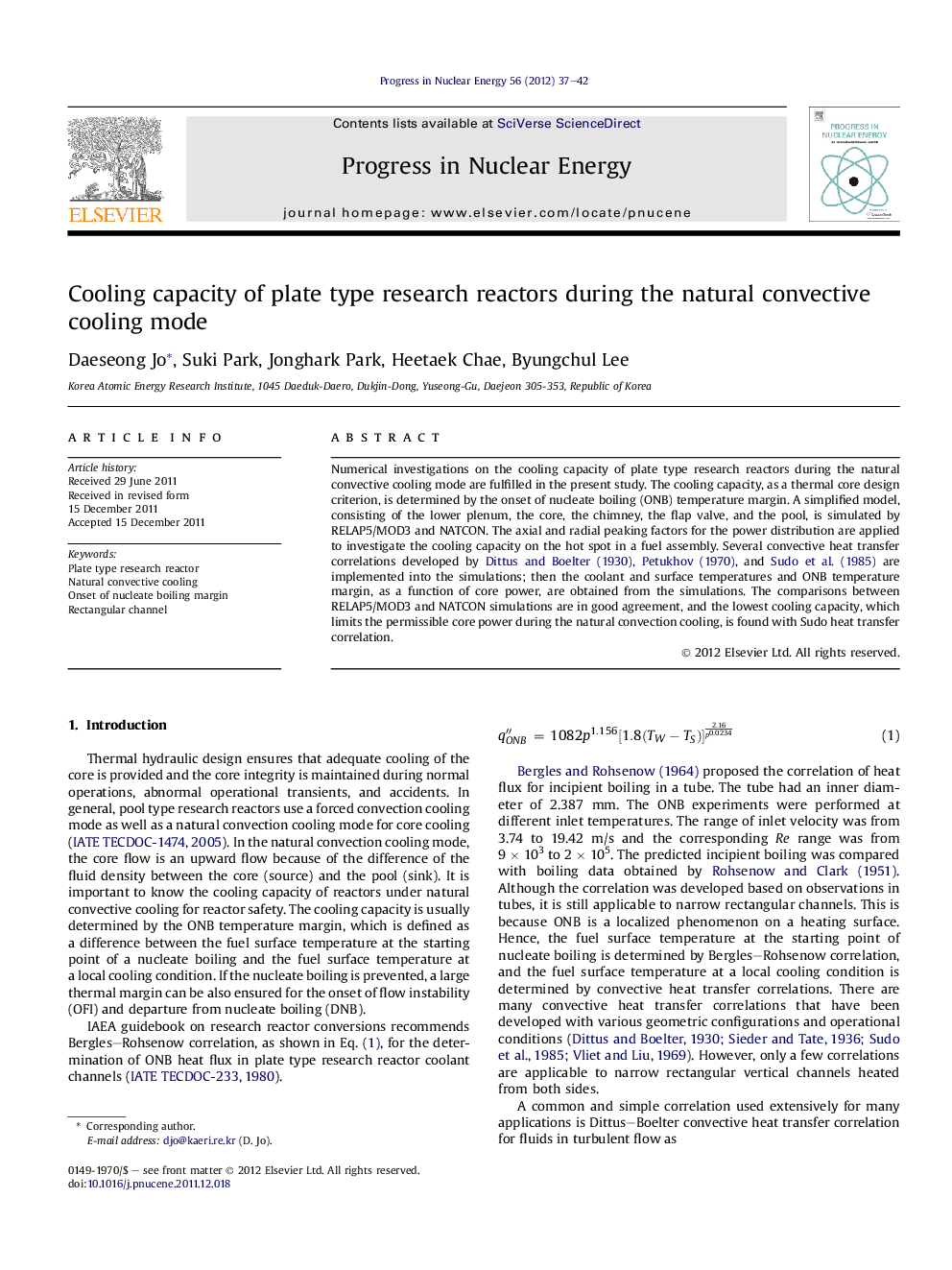| Article ID | Journal | Published Year | Pages | File Type |
|---|---|---|---|---|
| 1741075 | Progress in Nuclear Energy | 2012 | 6 Pages |
Numerical investigations on the cooling capacity of plate type research reactors during the natural convective cooling mode are fulfilled in the present study. The cooling capacity, as a thermal core design criterion, is determined by the onset of nucleate boiling (ONB) temperature margin. A simplified model, consisting of the lower plenum, the core, the chimney, the flap valve, and the pool, is simulated by RELAP5/MOD3 and NATCON. The axial and radial peaking factors for the power distribution are applied to investigate the cooling capacity on the hot spot in a fuel assembly. Several convective heat transfer correlations developed by Dittus and Boelter, 1930 and Petukhov, 1970, and Sudo et al. (1985) are implemented into the simulations; then the coolant and surface temperatures and ONB temperature margin, as a function of core power, are obtained from the simulations. The comparisons between RELAP5/MOD3 and NATCON simulations are in good agreement, and the lowest cooling capacity, which limits the permissible core power during the natural convection cooling, is found with Sudo heat transfer correlation.
► Cooling capacity of plate type research reactor during the natural convection cooling mode has been analyzed. ► A simplified model, consisting of the lower plenum, the core, the chimney, the pool and the flap valves, is simulated by RELAP5/MOD3 and NATCON. ► The maximum permissible reactor power cooled by natural convection is found to be approximately 400 kW.
